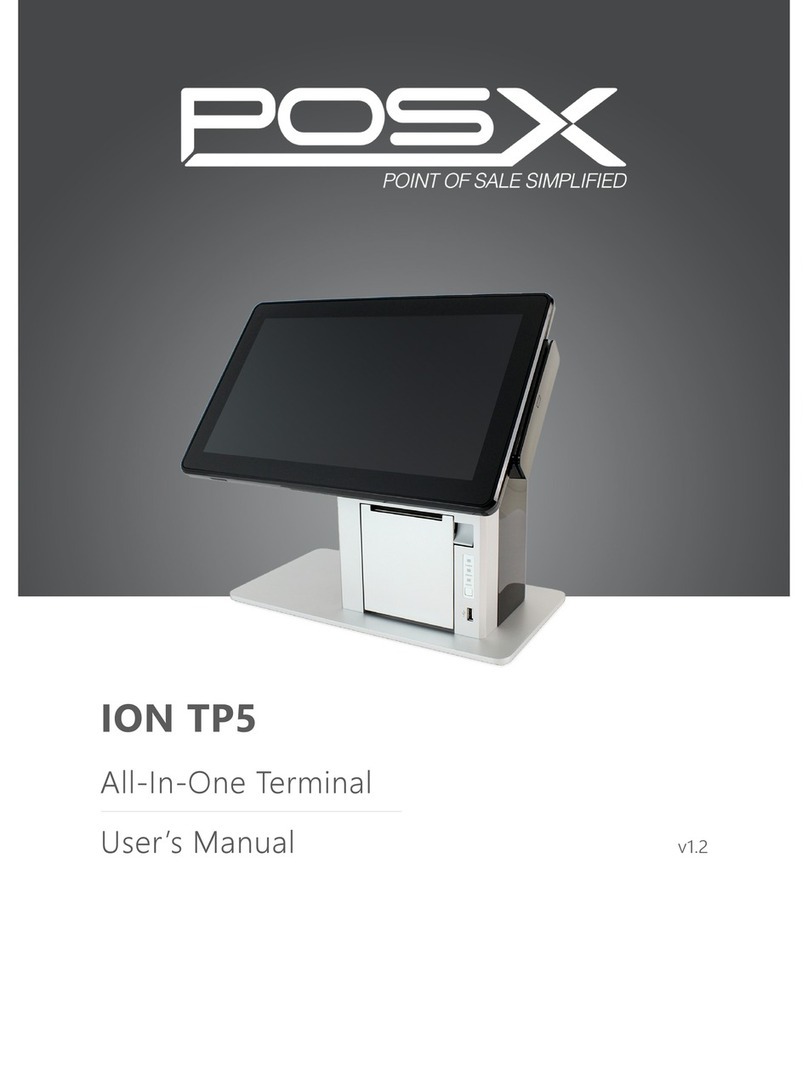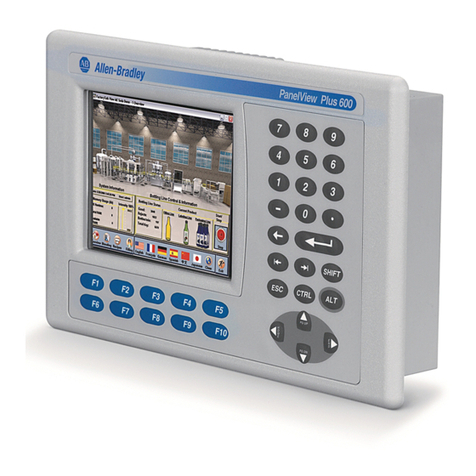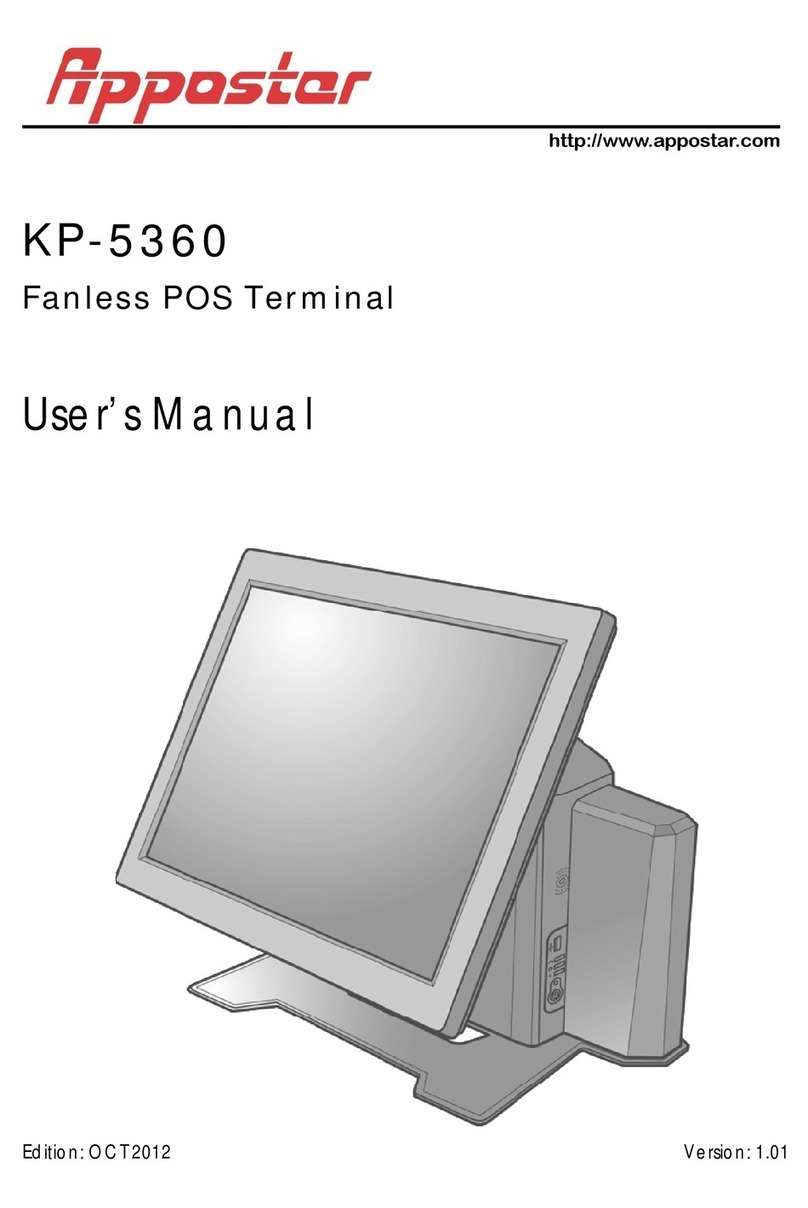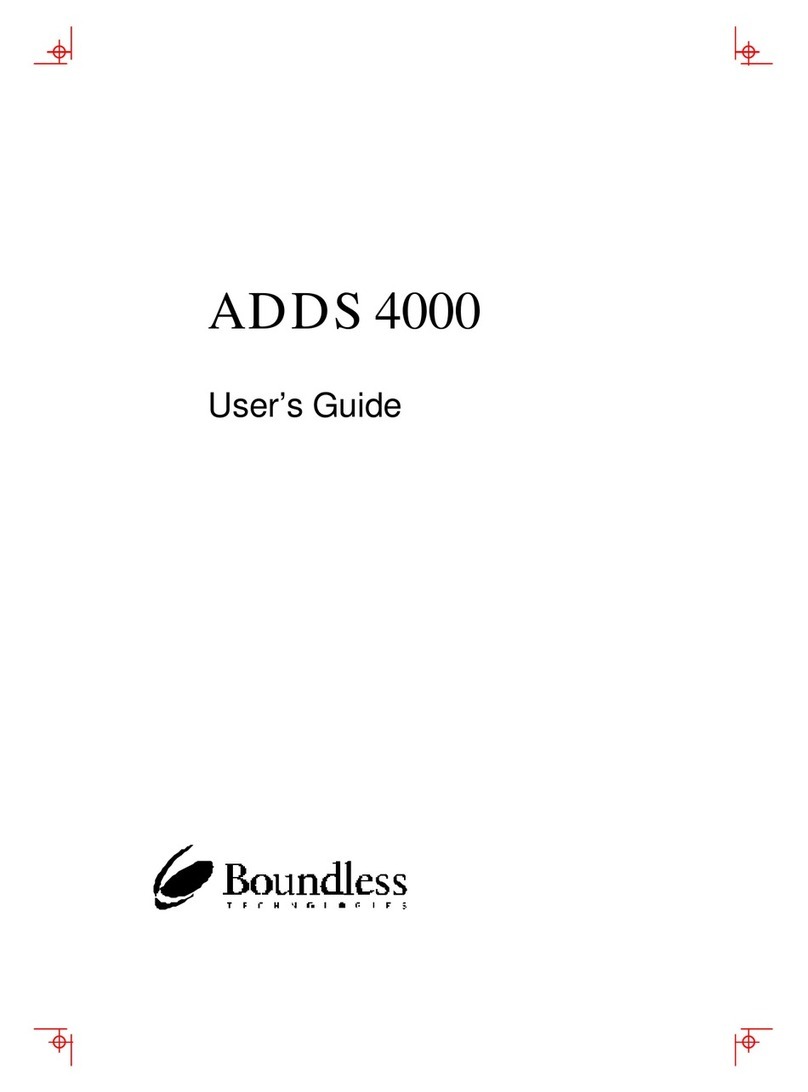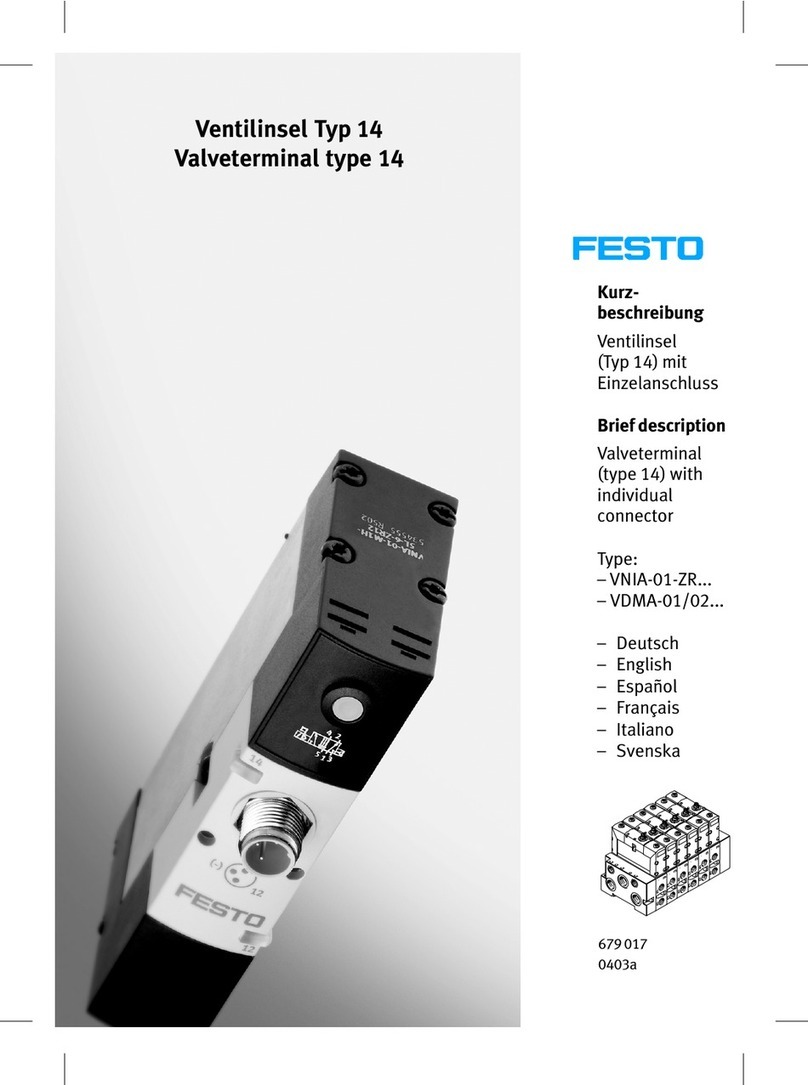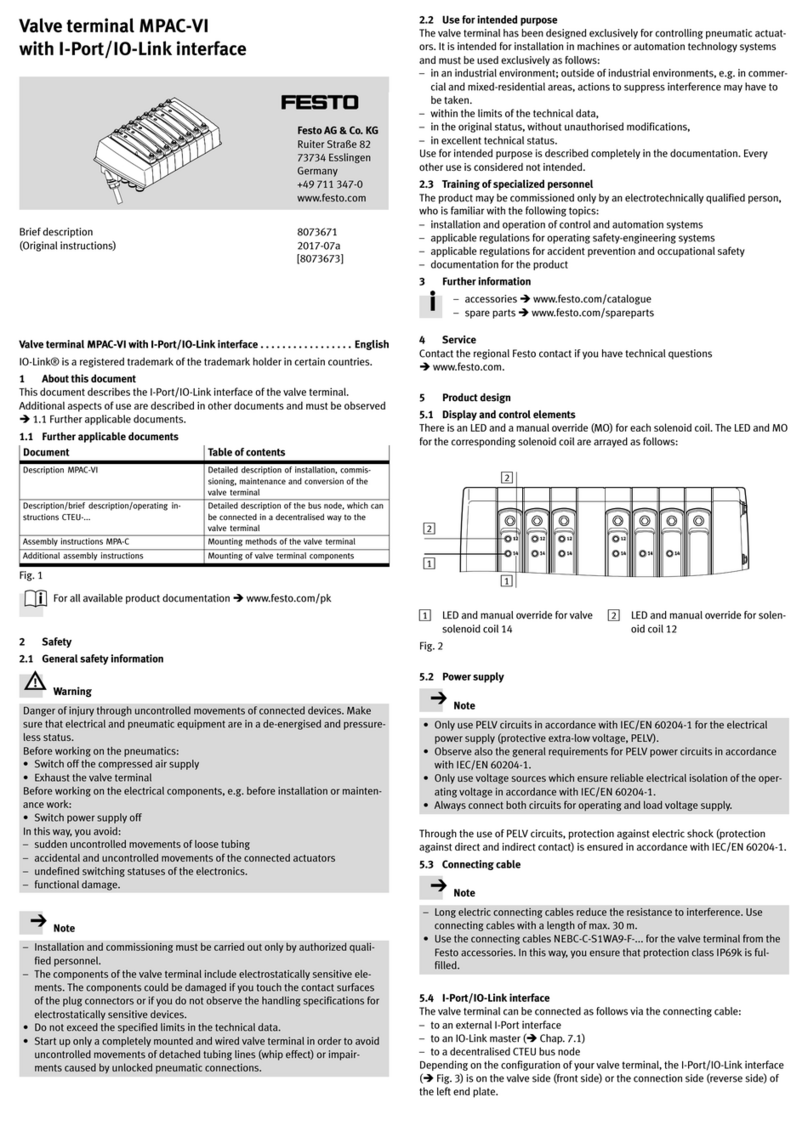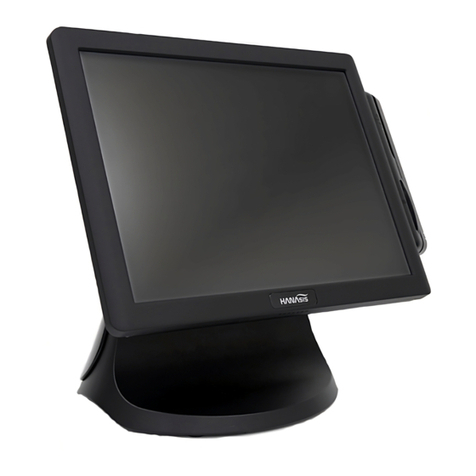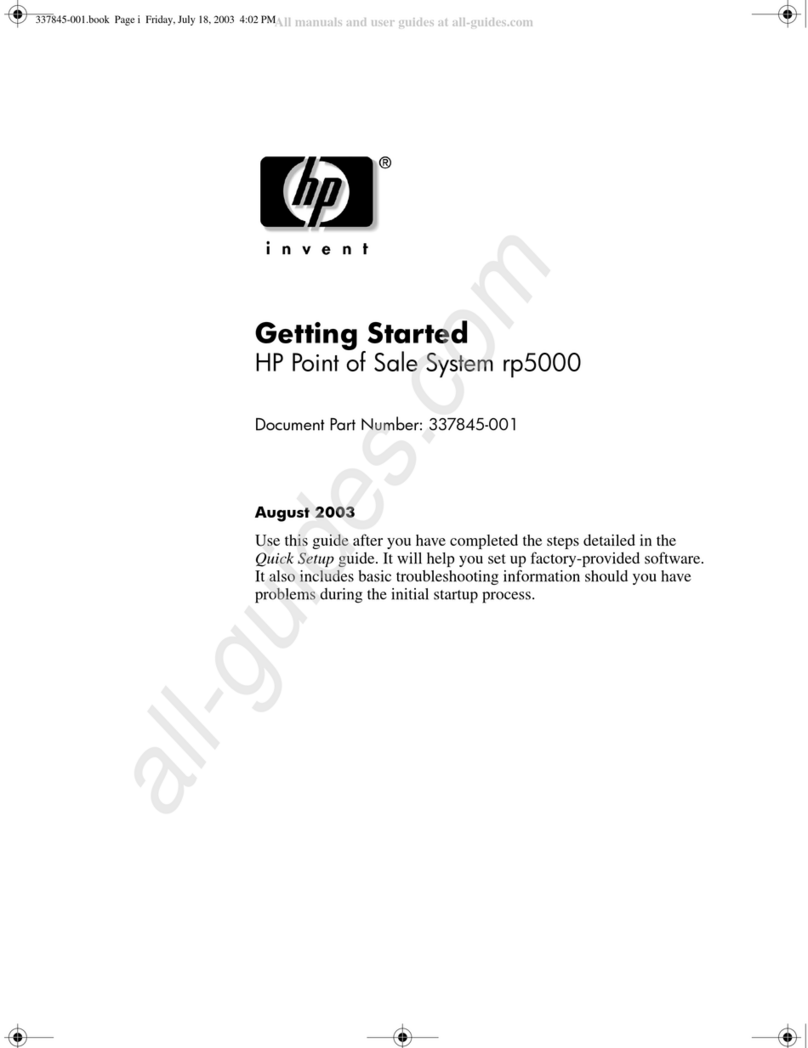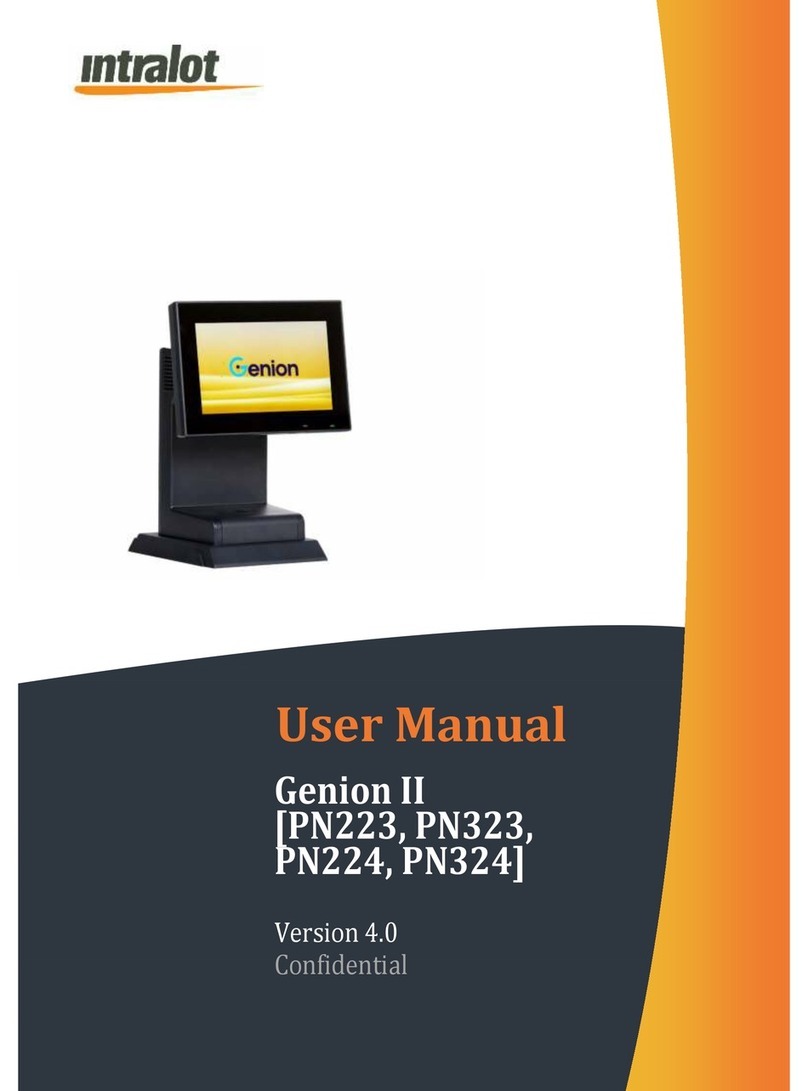VECTOR CONTROLS TLR-D5 Installation and operation manual

TLR-D5 Engineering Manual
TLR-D5
Intelligent Fan Coil controller, Base & Terminal
Features
•Temperature control for 2 and 4-pipe fan coil systems.
•Relays switching for each up to 10(6)A
•Large temperature range from
–20°C to 70°C (-4°F to 158°F).
•Automatic fan control for three stage fans.
•Control for heating, cooling and fan only operation
•Cost saving option with Economy functionality and set point limitation
•Password protected programmable user and control parameters
•External sensor or open contact for remote control, external heat – cool change or auto-changeover on supply
or outdoor temperature with selectable activation limits One terminal may control up to 8 base units in
parallel mode
•Password protected programmable user and control parameters
oSetpoint range limitation
oAccess control for setpoints, fan speeds and mode change
oAccess control for heat/cool change and time programs
oSelect your display contents
oSelectable behavior after return from power failure
•Temperature display in degree Celsius or Fahrenheit
Deluxe Version:
oClock and time schedule functions with special options for schools and universities
oClock keeps running for 48h in case of power failure
oDisplay with blue backlight
oInfrared remote controller option:
With special features for Boost and delayed switching on or off
Applications
•Air Only Systems: Three stage fans for single duct systems.
•Air/Water Systems: Induction units, fan coil units for 4-pipe systems
General Description
The TLR-D5 is a stand-alone electronic single loop controller with a fan control option and a binary sequence. The
controller includes 1 NTC room temperature sensor and 3+2 relays outputs. A detailed adaptation to local conditions is
possible with the use of a simple configuration routine. The TLR-D5 can be configured using the standard operation
terminal. No special tools or software is required.
The TLR-D5 has been specifically developed to switch larger fans with switching power of up to 10 (6) A.
Doc: 70-00-0095 20081223 ©2008 Vector Controls Page 1
SUNSTAR传感与控制 http://www.sensor-ic.com/ TEL:0755-83376549 FAX:0755-83376182 E-MAIL:[email protected]
SUNSTAR自动化 http://www.sensor-ic.com/ TEL: 0755-83376489 FAX:0755-83376182 E-MAIL:[email protected]

TLR-D5 Engineering Manual
Name
Deluxe version
2” x 4” housing of terminal
Power supply voltage
Control option (standard)
5 Relays outputs
Digital communication base – terminal
Series (TLR)
Ordering
Item name Item code Variant
Mounting size
Power
Key-data
TL
R
-D5-24 40-11 0001 Standard
88mm x 88mm 24VAC Fan coil controller with:
1 TI int or ext
3 DO (Relay) Fan control
2 DO (Relay) Binary control
TL
R
-D5-24-D 40-11 0002 Deluxe
TL
R
-D5-230 40-11 0003 Standard
88mm x 88mm 230VAC
TL
R
-D5-230-D 40-11 0004 Deluxe
Parameter preset
Add –Wx at the end of the Item Name or –x at the end of item
code to order pre-configured model
TL
R
-D5-xx 40-11 00xx 2-Pipe System
TL
R
-D5-xx -W1 40-11 00xx -1 Cooling only
Accessories
AE
R
-D5-24 40-11 0017
Base unit only 24V
AE
R
-D5-230 40-11 0018
Base unit only 230V
OP
R
-1 40-50 0001
2xAAA bat Remote controlle
r
S-Tn10-2
SD-Tn10-12-2
SD-Tn10-20-2
SDB-Tn10-12
SDB-Tn10-20
SRA-Tn10
SOA-Tn10
40-20 0001
40-20 0002
40-20 0003
40-20 0051
40-20 0004
40-20 0005
40-20 0006
Flying lead sensor with 2 m cable
Flying lead duct sensor 12cm immersion depth, 2m cable
Flying lead duct sensor 20cm immersion depth, 2m cable
Duct sensor with housing, 12cm immersion depth
Duct sensor with housing, 20cm immersion depth
Room sensor
Outdoor sensor
Dimensions [mm] (inch)
21
(0.8)
88 (3.5)
).588 (3
Doc: 70-00-0095 20081223 ©2008 Vector Controls Page 2
SUNSTAR传感与控制 http://www.sensor-ic.com/ TEL:0755-83376549 FAX:0755-83376182 E-MAIL:[email protected]
SUNSTAR自动化 http://www.sensor-ic.com/ TEL: 0755-83376489 FAX:0755-83376182 E-MAIL:[email protected]

TLR-D5 Engineering Manual
Technical specifications
Power Supply Operating Voltage
TLR-D5-24
TLR-D5-230
24 V AC ± 10 %, 50…60 Hz
230 V AC ± 10 %, 50…60 Hz
Power Consumption
TLR-D5-24
TLR-D5-230
Max. 3 VA
Max. 5 VA
Electrical Connection Terminal Connectors, wire 0.34…2.5 mm2(AWG 24…12)
Internal rectification: Full wave rectified
Deluxe type only:
Power backup for real time clock
Min 48h if charged for 24h
Signal inputs Temperature Input
Range Int. NTC: 0…50 °C (32…122 °F)
Ext. NTC (Sxx-Tn10 sensor): -20…70 °C (-4…158 °F)
Accuracy -20…0 °C (-4…32 °F): 0.5 K
0…50 °C (32…122 °F): 0.2 K
50…70 °C (122…158 °F): 0.5 K
Signal outputs Relays Outputs
AC Voltage
Insulation resistance
DO1…DO5
0…240 VAC, 10 (6) A max. each output
3750 VAC acc. to EN 60 730-1
Communication
Base - Terminal Communication Type
Cable Type
Max Distance
Digital: peer to peer
Copper wire 0.8…2.5 mm2(AWG18…AWG13)
200m (650ft) use shielded wire in an EMC challenged
environment. Conductor resistance must be compensated
if external sensor is used
Environment Operation
Climatic Conditions
Temperature
Humidity
To IEC 721-3-3
class 3 K5
0…50 °C (32…122 °F)
<95 % r.H. non-condensing
Transport & Storage
Climatic Conditions
Temperature
Humidity
Mechanical Conditions
To IEC 721-3-2 and IEC 721-3-1
class 3 K3 and class 1 K3
-25…70 °C (-13…158 °F)
<95 % r.H. non-condensing
class 2M2
Standards conform according to
EMC Standard 89/336/EEC
EMEI Standard 73/23/EEC
EN 61 000-6-1/ EN 61 000-6-3
Product standards
Automatic electrical controls for household and
similar use
Special requirement on temperature dependent
controls
EN 60 730 –1
EN 60 730 – 2 – 9
General
Terminal Degree of Protection IP30 to EN 60 529
Safety Class III (IEC 60536)
Housing Material
Cover, back part
Mounting Plate
Fire proof ABS plastic (UL94 class V-0)
Galvanized Steel
Color White RAL 9003
Dimensions (H x W x D) 88 x 88 x 21 mm (3.5” x 3.5” x 0.8”)
Weight (controller only) 70 g (2.8 oz)
General Base Degree of Protection IP30 to EN 60 529
Safety Class Base: II (IEC 60536)
Housing Material Fire proof ABS plastic (UL94 class V-0)
Color Gray (RAL 7001 / 7035)
Dimensions (H x W x D) 57 x 147 x 115 mm (2.25 x 5.8 x 4.5 in)
Weight including package, base + terminal)
TLR-D5-24
TLR-D5-230
520 g (1.15 lb)
570 g (1.25 lb)
Doc: 70-00-0095 20081223 ©2008 Vector Controls Page 3
SUNSTAR传感与控制 http://www.sensor-ic.com/ TEL:0755-83376549 FAX:0755-83376182 E-MAIL:[email protected]
SUNSTAR自动化 http://www.sensor-ic.com/ TEL: 0755-83376489 FAX:0755-83376182 E-MAIL:[email protected]

TLR-D5 Engineering Manual
Doc: 70-00-0095 20081223 ©2008 Vector Controls Page 4
Selection of actuators and sensors
Temperature Sensors:
Use only our approved NTC sensors to achieve maximum accuracy. Recommended is SDB-Tn10-20 as Duct sensor,
SRA-Tn10 as Room sensor and SDB-Tn10-20 with AMI-S10 as immersion sensor.
Binary auxiliary devices:
Compressors, heat stages on/off valves, etc. Do not directly connect devices that exceed 250 VAC, 10(6) A. Observe
startup current on inductive loads.
Fan motors:
Observe power limits and startup currents. Do not connect fans that exceed 6A inductive load. Note: startup currents
may be a multiple of the rated current of the fan. Verify with the fan supplier if unclear. Do not connect directly motors
larger than 1kW.
Connection diagramConnection diagram
Power supply LPower supply L
Connection terminalsConnection terminals
RTEXT
0V AC N
2
1
FAN 1-3
Heat
Valve
Cool
Valve
3
7
4 - 6 8 9
Operation
Terminal
10 11 12 13
14 15 Slave base unit
wiring of terminal,
do not connect 10 and 13
10 11 12 13
L Power supply:
TLR-D5-24: 24VAC, +24VDC
TLR-D5-230: 230VAC
TLR-D5 1 N Power supply:
TLR-D5-24: 0V, -24VDC
TLR-D5-230: 0V
(N) ⊥
−
Attention: Max. switching power is
limited to 250VAC
,
10
(
6
)
A
2
(L) ~ +
3
1-0
4
5
6
1-1
1-2
1-3
Fan Low
Fan Medium
Fan High
Power for Fan
82-1
7
2-0 Power for DO4/5
12 Bus
13 TEXT
10 +5V
11 GND
TL
R
-D5F
Terminal
1
2
3
4
92-2
Open
Close
14 GND
15 TEXT
RTEXT 1
2
SUNSTAR传感与控制 http://www.sensor-ic.com/ TEL:0755-83376549 FAX:0755-83376182 E-MAIL:[email protected]
SUNSTAR自动化 http://www.sensor-ic.com/ TEL: 0755-83376489 FAX:0755-83376182 E-MAIL:[email protected]

TLR-D5 Engineering Manual
Mechanical design and installation
The unit consists of two parts: The base unit and the terminal.
Installation base
The housing of the TLR base unit is a compact enclosure. The controller may be mounted in any orientation by surface
mounting on a wall or in a cabinet with two screws or on a 35mm DIN rail.
When mounting note the following:
•The controller should not be freely accessible after mounting. A protective housing should be used, if mounted
outside an electrical cabinet.
•Ensure adequate air circulation to dissipate heat generated during operation.
•Local installation regulations must be observed.
Mounting location terminal
•On an easy accessible interior wall, approx. 1.5 m (4.5’) above the floor in an area of average temperature.
•Avoid exposure to direct sunlight or other heat sources, e.g. the area above radiators and heat emitting
electrical equipment.
•Avoid locations behind doors, outside walls and below or above air discharge grills and diffusers.
•Location of mounting is less critical if external temperature sensors are used
Installation terminal
1. Install the mounting plate straight to the wall or the flush mounting box. Make sure that the nipple with the
front holding screw is facing to the ground. Make sure the screw heads do not stand out more than 5 mm of
the surface of the mounting plate.
2. Connect the wires of the terminals to the communication wires according wiring diagram
3. Slide the two latches located on the top of the front part into the hooks of the mounting plate.
4. Lower the front part until located flat on the wall and the mounting plate is not visible anymore. Make sure
the connection cable does not get into the way.
5. With a Philips-type screw driver of size #2, carefully tighten the front holding screw to secure the front part to
the mounting plate. This screw is located on the front lower side of the unit. There is no need to tighten the
screw too much.
Connection base to terminal
•Max. Distance: 200m (650ft)
•Normal cables maybe used for wiring in an EMC-save environment. In an impaired EMC environment use only
shielded cables.
The operating voltage must comply with the requirements for safety extra-low voltage (SELV) as per
EN 60 730.
•One terminal may drive up to 8 base units. See wiring for parallel connections. Total wire distance should not
exceed 200 m (650ft).
•Conductor resistance will influence external temperature reading. 450 Ωwill result in an increase of 1°C (2°F).
Compensate using UP-08 if external temperature is used to control unit.
Doc: 70-00-0095 20081223 ©2008 Vector Controls Page 5
SUNSTAR传感与控制 http://www.sensor-ic.com/ TEL:0755-83376549 FAX:0755-83376182 E-MAIL:[email protected]
SUNSTAR自动化 http://www.sensor-ic.com/ TEL: 0755-83376489 FAX:0755-83376182 E-MAIL:[email protected]

TLR-D5 Engineering Manual
Display and Operation
The operation terminal uses an LCD display and four operation buttons.
Legend:
1. 4-digit display of current value, time,
control parameter or setpoint
2. Unit of displayed value, °C, °F, % or none
3. Indication of fan speeds
4. 4-digit display of current value, time, control
parameter or setpoint
5. Operation modes: Comfort mode, Economy mode, OFF Energy Hold Off
6. Symbols:
Heating Active Cooling Active Schedule Set Fan Active Manual Override Frost Protection
7. Buttons for operating the controller
POWER button: Pressing the button less than 2 sec toggles economy and
comfort mode. Pressing the button for more than 2 seconds switches the
unit off.
UP and DOWN buttons: change setpoints and parameters
OPTION button: used for changing fan speed and accessing advanced setup. Acts as Enter in
parameter changing menu.
6
5
1
2
3
4
7
8. While the fan is in operation, the Fan symbol will be indicated and the active Fan speed is displayed in the
vertical scale. Activation of heating or cooling coil is indicated by the blinking of the respective symbol in the
lower left corner of the display.
Power Failure
All the parameters and set points are memorized and don’t need to be reentered. Depending on UP05 the unit will
remain switched off, switch on automatically or return to the operation mode it was in before the power failure.
The deluxe version includes a real time clock with a 48h backup battery powered through a super capacitor. The time
does not need to be re-entered after a power failure.
Frost Protection
The controller will enter frost protection mode if the room temperature drops below 5°C (41°F). All heating outputs will
be fully opened. Frost protection mode will be left once the temperature reaches 10°C (50°F). Frost protection display
will remain until a button is pressed. Frost protection can be enabled/disabled using user parameter UP-09
Operation Modes
•Comfort: The unit is in full operation mode. All the control functions are operating according to their setpoints.
The unit displays occupied mode.
•Economy: The set point is shifted according to parameters FC-04. The heating parameter is shifted down and
cooling parameter up. The unit displays unoccupied mode. Fan speeds are limited to maximum medium fan
speed. Economy operation may be disabled with UP-06.
•Energy Hold Off (EHO): The unit is switched off. All outputs are off. The temperature will still be monitored in
order to activate the unit in case of frost. (If frost protection is enabled). Off and current time is displayed.
Activation of operation modes
•Via operation terminal
•Clock: (Deluxe version only) Operation modes may automatically be switched according to daytime and
weekday. The clock symbol will be indicated if time programs are activated.
•Infrared Remote Controller: (Deluxe version only) use OPR-1 to control the unit remotely
•Via external contact (comfort/economy)
Note: Time programs will not operate, if operation mode is set to OFF by remote control or if time is not set.
Doc: 70-00-0095 20081223 ©2008 Vector Controls Page 6
SUNSTAR传感与控制 http://www.sensor-ic.com/ TEL:0755-83376549 FAX:0755-83376182 E-MAIL:[email protected]
SUNSTAR自动化 http://www.sensor-ic.com/ TEL: 0755-83376489 FAX:0755-83376182 E-MAIL:[email protected]

TLR-D5 Engineering Manual
Clock Operation and Time Schedules (Deluxe Version)
TLR-D5-D contains a real time clock. Up to 16 mode changes (not defined, Off, Economy, Comfort, University mode)
based on weekdays and time may be programmed. See chapter operation on how to program switch times.
The different scheduled mode changes have these effects:
Name on display Function Override reset
no Switching event not used
OFF Operation mode changes to off mode Reset is active
ECO Operation mode changes to economy mode Reset is not active
ON Operation mode changes to comfort mode Reset is not active
UNI Operation mode does not change Reset is not active
UNI: University mode: This switching mode is used for rooms such as lecture rooms and auditoriums that might be
occupied during a certain time. During this time the reset is not active. The unit will not start itself when UNI mode is
active. It still needs to be manually activated. This is to avoid unnecessary heating or cooling of such rooms while they
are not occupied.
Override reset function: The override reset applies when the unit is manually switched on, while in scheduled off mode.
The unit will switch automatically off when the reset time defined in UP13 expires. Setting UP13 to 0, disables the
override reset.
A blinking clock indicates that the time needs to be set. Time programs will not operate if the time is not defined. See
chapter operation, advanced settings for instructions on how to set the time.
Occupation Sensor, External Heat / Cool change, Auto change over
Remotely control comfort and economy mode for example with an occupation sensor or key switch. If the binary input
is deactivated for a selectable time the unit will change to economy mode. For a key switch, set delay time to 0. The
external input may as well be configured to change heating and cooling mode by a binary signal or by measuring the
supply temperature.
Error messages
The TLR-D5 may display the following error condition:
Err1: Temperature sensor faulty. The temperature sensor is damaged.
Err2: External input for heat / cool auto change over missing or damaged.
FP: Frost protection is active.
Doc: 70-00-0095 20081223 ©2008 Vector Controls Page 7
SUNSTAR传感与控制 http://www.sensor-ic.com/ TEL:0755-83376549 FAX:0755-83376182 E-MAIL:[email protected]
SUNSTAR自动化 http://www.sensor-ic.com/ TEL: 0755-83376489 FAX:0755-83376182 E-MAIL:[email protected]

TLR-D5 Engineering Manual
Operation of the terminal unit
Switching ON
The unit is switched on by pressing the POWER button. It will start up in comfort mode.
Changing between COMFORT and ECONOMY
Pressing the POWER button for less than 2 seconds toggles between ECONOMY and COMFORT modes. Economy mode
may be disabled with UP06.
Switching OFF
Pressing the POWER button for more than 2 seconds, will switch the unit off. OFF and current time will be displayed in
the LCD for the deluxe unit. Current temperature and OFF is displayed for the basic unit.
Standard display
Standard display is enabled with parameter UP08. This display mode is active if no UP/DOWN or OPTION key has
been pressed during the previous 30 seconds. The contents of the large and small digits may be chosen with
parameters UP09 to UP10.
Should Standard display be disabled, the selected loop setpoint will be displayed in the small digits, the associated
input in the large digits and the output in the right hand scale.
Changing of set points
Change the set point with the UP/DOWN buttons. Changing of set points may be disabled with UP01.
Manual control of fan speeds
I Manually change fan speeds by pressing the OPTION key for less than 3 seconds. Repeatedly pressing the OPTION
key will toggle through these fan speed selections: Fan 1 →Fan 2 →FAN 3 →FAN Auto. Any selection other than FAN
Auto will display the manual override sign. Manual override may be disabled with UP02.
Accessing advanced settings
Pressing the option button for more than three seconds will start the advanced setup menu. The basic version will only
show heat/cool setup. The deluxe version will allow access to the time setting function.
The large LCD digits display SEL. The advanced setup menu accesses these settings: Heat / Cool change, Clock setup,
Time schedule. The menu may be left by pressing the POWER button or by not pressing a button for more than 5
minutes.
•Heat / Cool / Fan only change. Pressing the OPTION button toggles Heating – Cooling – Fan only mode.
Access to Heat/Cool change may be disabled with UP-03
Clock Setup and Time Schedule (only available on Deluxe versions)
•Clock Setup. The current time is displayed in the small digits. Pressing the OPTION button will enter the clock
setup. The minutes are blinking and may be changed with the UP/DOWN buttons. Pressing OPTION saves the
minutes and steps to the hours. The hours are blinking. Pressing the OPTION button again will step to the
weekday. DAY1-7 is displayed. Day 1 stands for the first working day (Monday) of a 5-day working week.
(See schedule). Select the day according to current weekday. Pressing Option again saves the settings and
moves back to the SELECT menu.
•Time Schedules: press the option button while Pro is displayed in the small digits. Pro1 is now shown in the
large digits, while the number 1 is blinking. Select time program by using UP/DOWN buttons. There are a
total of 4 time programs with each 4 switching times available. Enter the time program by pressing the
OPTION button.
1. Activate or deactivate the time program. Choose ON or OFF with the UP/DOWN buttons
2. Select weekday(s) = d1-7, d1-5, d6-7, day1, day2, day3, day4, day5, day6, day7
The next steps define the switching mode and time. The bar indicator on the right side shows
programming progress. There are four switch times for each program.
3. Select desired operation mode. (no, OFF, ECO, ON, UNI), press OPTION to continue
no = disables this switching time
OFF = switches unit Off, enables reset timer
ECO = sets operation mode to On and Economy, disables reset timer
ON = sets operation mode to On and Comfort, disables reset timer
UNI = Does not change operation mode, only disables reset timer
4. Select switching time 00:00 to 23:45 in 15-minute steps; press OPTION to continue.
5. Repeat steps 3 and 4 for each switching time.
Access to time schedules may be disabled with UP-04
Doc: 70-00-0095 20081223 ©2008 Vector Controls Page 8
SUNSTAR传感与控制 http://www.sensor-ic.com/ TEL:0755-83376549 FAX:0755-83376182 E-MAIL:[email protected]
SUNSTAR自动化 http://www.sensor-ic.com/ TEL: 0755-83376489 FAX:0755-83376182 E-MAIL:[email protected]

TLR-D5 Engineering Manual
Operation with OPR-1
The deluxe version may also be operated through an infrared
remote controller.
1. Mode indication, Auto, Dry, Cool, Fan, Heat
2. 2-digit display of setpoint
3. Fan indication
4. 4-digit display of current time or delayed switching time
5. Economy button: Toggles Economy/Comfort mode
6. Mode button, changes operation modes
7. UP/DOWN Button: Set point adjustment buttons
8. FAN Button: Changes fan speed, low – medium – high
or Auto
9. Boost button, activates full output for 5 Minutes
10. Time related buttons: Timer, Hour, Minute
11. POWER Button: Operation mode ON - OFF
Switching ON
The unit is switched on by pressing the POWER button. It will start up in comfort mode.
Changing between COMFORT and ECONOMY
Pressing the SLEEP button toggles between ECONOMY and COMFORT modes.
Switching OFF
Pressing the POWER while the unit is on, will switch the unit off. The current time will be displayed in the LCD of OPR-1.
Changing of set points
Only the set points for the temperature loop may be changed. Set point range is 15 to 30 °C.
Changing of fan speeds
Repeatedly pressing the fan speed button steps through low, medium, high and automatic fan speeds. Automatic fan
speed will not be activated in FAN ONLY mode.
Boost
Pressing the boost button activates a 5 minute boost. The output will be fully opened for the period of 5 minutes
independent of demand.
Clock settings
The remote controller contains a daytime clock. The receiving TLR-D5 controller will adopt the OPR-1’s own clock
whenever it received a command from it.
In order to set the clock in the OPR-1, press HOUR and MINUTE button together until the clock starts blinking. Then
set the correct time with the HOUR and MINUTE buttons. Confirm by pressing the TIMER button.
Delayed switching
The unit may be delayed switched on or off using the timer button. Pressing the timer button once will display Timer
ON if currently in OFF mode or TIMER OFF if currently in ON mode. Set the time when the unit is supposed to switch
on or off using the HOUR and MINUTE keys.
Mode changes
Repeatedly pressing the mode button may activate the following operation modes: HEAT, COOL and FAN ONLY. The
mode change function on the TLR-D5 may be disabled using the UP00 parameters.
Note:
The remote controller is currently only available in °C mode.
24 º
C
A
UTO
CLOCK
0:00
c
d
e
f
g
h
j
MODE
i
BOOST k
TIMER
HOUR l
MINUTE
SLEEP
11
Doc: 70-00-0095 20081223 ©2008 Vector Controls Page 9
SUNSTAR传感与控制 http://www.sensor-ic.com/ TEL:0755-83376549 FAX:0755-83376182 E-MAIL:[email protected]
SUNSTAR自动化 http://www.sensor-ic.com/ TEL: 0755-83376489 FAX:0755-83376182 E-MAIL:[email protected]

TLR-D5 Engineering Manual
Doc: 70-00-0095 20081223 ©2008 Vector Controls Page 10
Setting of parameters
The TLR-D5 is an intelligent controller and can be adapted to fit perfectly into your application. The control operation is
defined by parameters. The parameters are set during operation by using the standard operation terminal.
The parameters are password protected. There are two levels of parameters: User operation parameters for access
control settings and Expert parameters for control functions and unit setup. The passwords for user levels and expert
levels are different. Only control experts should be given the control parameter password.
The parameters can be changed as follows:
1. Press UP and DOWN button simultaneously for three seconds. The display shows the software version in the
large digits and the software revision in the small digits.
2. Pressing the OPTION button will indicate CODE on the small digits and 000 on the large digits.
3. The code for accessing the user parameters is 009
4. Select this using UP or DOWN buttons.
5. Press OPTION button after selecting the correct code.
6. Once logged in, the parameter is displayed immediately.
7. Select the parameters with the UP/DOWN buttons. Change a parameter by pressing the OPTION button. The
MIN and MAX symbols show up and indicate that the parameter may be modified now. Use UP or DOWN
buttons to adjust the value.
8. After you are done, press OPTION or POWER in order to return to the parameter selection level.
9. Press the POWER button again so as to leave the menu. The unit will return to normal operation if no button
is pressed for more than 5 minutes.
User Parameters
Parameter Description Range Default
UP 00 Enable access to operation modes ON, OFF ON (Enabled)
UP 01 Enable access to set points ON, OFF ON (Enabled)
UP 02 Enable manual control of fan speeds ON, OFF ON (Enabled)
UP 03 Enable change of heating / cooling mode for 2 pipe systems ON, OFF W00: ON
(Enabled)
W01: OFF
(Disabled)
UP 04 Enable access to time programs: ON, OFF ON (Enabled)
UP 05 State after power failure:
0 = off, 1 = on, 2 = state before power failure
0, 1, 2 2
UP 06 Enable Economy functionality ON, OFF ON (Economy )
UP 07 Celsius or Fahrenheit, ON for Fahrenheit, OFF for Celsius ON, OFF OFF (Celsius)
UP 08 Calibration value of temperature sensor. If required it is possible
to shift the temperature –10° to +10° in 0.1K steps.
-10…10 0
UP 09 Enable frost protection ON, OFF W00 = ON
(Frost
Protection)
W01 = OFF
(No Frost
Protection)
UP 10 Select contents of Large LCD display in standard mode: 0…5 2
00 = OFF
01 = Setpoint
02 = Temperature Input of control loop
03 = Output Fan Speed
04 = Clock
05 = Alternate Temperature Sensor
UP 11 Select contents of small LCD display in standard mode 0…5 4, 1
UP 12
Deluxe only Clock display type:
OFF = Show 24hour clock
ON = Show 12hour clock (AM, PM)
ON, OFF OFF (24h)
UP 13
Deluxe only Reset timer for override mode: Only available for deluxe version
0 = Reset of override mode is not active.
1…255 = delay in minutes to switch off device if ON/Economy mode is
activated while the unit is scheduled to be in OFF mode
0…255 60 (Min)
Subject to alteration
SUNSTAR传感与控制 http://www.sensor-ic.com/ TEL:0755-83376549 FAX:0755-83376182 E-MAIL:[email protected]
SUNSTAR自动化 http://www.sensor-ic.com/ TEL: 0755-83376489 FAX:0755-83376182 E-MAIL:[email protected]

TLR-D5 Engineering Manual
Control Functions
The controller is designed to control fan coil systems with up to three fan speeds. The fan speeds may be controlled to
run manual or automatic. In automatic mode, the controller will change fan speeds according to the temperature
difference of room temperature and setpoint.
s. The fan speeds may be controlled to
run manual or automatic. In automatic mode, the controller will change fan speeds according to the temperature
difference of room temperature and setpoint.
SetpointSetpoint
•Economy set point shift XSBY: This function shifts the set point while the operation mode is Economy. The
heating set point WHis reduced and the cooling set point WCincreased by the value of the Economy set point
shift XSBY.
•Economy set point shift XSBY: This function shifts the set point while the operation mode is Economy. The
heating set point WHis reduced and the cooling set point WCincreased by the value of the Economy set point
shift XSBY.
•Dead Zone Span XDZ: The dead zone span lies between the heating and the cooling set point. The user can
change the heating or cooling set points within adjustable limits.
•Dead Zone Span XDZ: The dead zone span lies between the heating and the cooling set point. The user can
change the heating or cooling set points within adjustable limits.
•Minimum and Maximum Set Point Limits: Limits the adjustable range of the loop set point. The limits for
heating and cooling sequence may be chosen individually.
•Minimum and Maximum Set Point Limits: Limits the adjustable range of the loop set point. The limits for
heating and cooling sequence may be chosen individually.
Control SequenceControl Sequence
•4-pipe or 2-pipe system: 4-pipe systems use one heating and one cooling stage. Heating and cooling mode
will switch according to demand. A delay is implemented to prevent unnecessary switching between heating
and cooling mode: Heat – Cool change over delay.
•4-pipe or 2-pipe system: 4-pipe systems use one heating and one cooling stage. Heating and cooling mode
will switch according to demand. A delay is implemented to prevent unnecessary switching between heating
and cooling mode: Heat – Cool change over delay.
•Switching Hysteresis: Defines the difference between switching on and switching off of an output. A small
hysteresis will increase the number of switching cycles and thus the wear on associated equipment.
•Switching Hysteresis: Defines the difference between switching on and switching off of an output. A small
hysteresis will increase the number of switching cycles and thus the wear on associated equipment.
•Delay OFF: Prevents a too short running cycle for the fan and heating or cooling stages by setting a
minimum running time. Delay OFF applies to all heating and cooling stages.
•Delay OFF: Prevents a too short running cycle for the fan and heating or cooling stages by setting a
minimum running time. Delay OFF applies to all heating and cooling stages.
•Delay ON: Prevents a too short stopping cycle for fan and heating or cooling stages by setting a minimum
stopping time. Delay ON applies to all heating and cooling stages.
•Delay ON: Prevents a too short stopping cycle for fan and heating or cooling stages by setting a minimum
stopping time. Delay ON applies to all heating and cooling stages.
•Heat Cool change over delay: For 4-pipe systems: Delays the switching between heating on cooling mode
in order to prevent a hunting of heating and cooling cycles.
•Heat Cool change over delay: For 4-pipe systems: Delays the switching between heating on cooling mode
in order to prevent a hunting of heating and cooling cycles.
•Fan off delay: In case heating or cooling has been active and the unit is switched off or reached the set point,
a 60 seconds fan off delay is activated to prevent over heating of a heating stage or condensation on a
cooling coil.
•Fan off delay: In case heating or cooling has been active and the unit is switched off or reached the set point,
a 60 seconds fan off delay is activated to prevent over heating of a heating stage or condensation on a
cooling coil.
•Step by step switching: In order to reduce the startup load of large fan motors, fan stages will be switched
on and off step by step, going through low and medium before activating high fan speeds.
•Step by step switching: In order to reduce the startup load of large fan motors, fan stages will be switched
on and off step by step, going through low and medium before activating high fan speeds.
•Mold protection. The fan will not stop when the setpoint is reached while this parameter is activated. This
way the room will still be ventilated although there is no need to vary the temperature. The valve will still be
controlled according to temperature need. The fan will still switch off once the unit is set to OFF.
Mold protection should not be used for fan-only systems!
•Mold protection. The fan will not stop when the setpoint is reached while this parameter is activated. This
way the room will still be ventilated although there is no need to vary the temperature. The valve will still be
controlled according to temperature need. The fan will still switch off once the unit is set to OFF.
Mold protection should not be used for fan-only systems!
Fan Medium
Fan Medium
T Room Temperature wHSetpoint Heating Mode
XFH Switching Span Heating wC Setpoint Cooling Mode
XFC Switching Span Cooling HFHysteresis
T Room Temperature wHSetpoint Heating Mode
XFH Switching Span Heating wC Setpoint Cooling Mode
XFC Switching Span Cooling HFHysteresis
Cooling Mode
Heating Mode
Fan Low
0
XFH
WH
XFC
WC
Fan High
HF
Mold protection
ON
T
[K]
Doc: 70-00-0095 20081223 ©2008 Vector Controls Page 11
SUNSTAR传感与控制 http://www.sensor-ic.com/ TEL:0755-83376549 FAX:0755-83376182 E-MAIL:[email protected]
SUNSTAR自动化 http://www.sensor-ic.com/ TEL: 0755-83376489 FAX:0755-83376182 E-MAIL:[email protected]

TLR-D5 Engineering Manual
Input configurationInput configuration
Frost protectionFrost protection Priority for alarm conditions
1. Frost protection
2. Operation mode OFF (EHO)
3. Comfort or Economy
Frost protection will activate if the control temperature sinks below 5°C (41°F).
Operation returns back to normal if the control temperature reaches 10°C (50°F).
Frost protection alarm is displayed as FP in the smaller digits on the LCD display. An
active alarm is indicated by a constant alarm display, once the alarm condition is
removed, the alarm display flashes once per second until acknowledged by the
OPTION key.
Frost protection will activate if the control temperature sinks below 5°C (41°F).
Operation returns back to normal if the control temperature reaches 10°C (50°F).
Frost protection alarm is displayed as FP in the smaller digits on the LCD display. An
active alarm is indicated by a constant alarm display, once the alarm condition is
removed, the alarm display flashes once per second until acknowledged by the
OPTION key.
If frost protection is active, the unit will switch to high fan speed and set the analog output to full open.If frost protection is active, the unit will switch to high fan speed and set the analog output to full open.
Frost protection should be disabled for cooling only systems. (Per default on TLR-D41-W01)Frost protection should be disabled for cooling only systems. (Per default on TLR-D41-W01)
Temperature inputTemperature input
0.2
0.5
1.0
A
ccuracy in Kelvin,
Tem
p
erature In
p
ut
0 50 100 T °C
The TLR-D5 includes an NTC-based passive temperature sensor. A
sensor of the same type can be connected as alternative control input or
as input for additional functions. The accuracy of the temperature input
is shown in the table to the right. Specified accuracy can only be
guaranteed by using a manufacturer approved temperature sensor. For
best results use Sxx-Tn10 sensors.
The TLR-D5 includes an NTC-based passive temperature sensor. A
sensor of the same type can be connected as alternative control input or
as input for additional functions. The accuracy of the temperature input
is shown in the table to the right. Specified accuracy can only be
guaranteed by using a manufacturer approved temperature sensor. For
best results use Sxx-Tn10 sensors.
Choose the active temperature input (intern or extern) for the controller
input with FC17. Setting FC17 = 1 uses external input as control input.
All other settings use internal sensor as control input
Choose the active temperature input (intern or extern) for the controller
input with FC17. Setting FC17 = 1 uses external input as control input.
All other settings use internal sensor as control input
T °C
Additional functions of the external temperature input:Additional functions of the external temperature input:
Following additional functions are available, in case the external temperature input is not used as control input.Following additional functions are available, in case the external temperature input is not used as control input.
Toggle of Economy and
comfort operation modes
Toggle of Economy and
comfort operation modes Economy and Comfort modes are controlled through an external contact by
connecting the external temperature input to ground
Economy and Comfort modes are controlled through an external contact by
connecting the external temperature input to ground
Activation Delay: Defines the delay the binary contact has to be open before
Economy mode is activated.
Activation Delay: Defines the delay the binary contact has to be open before
Economy mode is activated.
This function may be used together with key card switches for hotels or motion
detectors for offices.
This function may be used together with key card switches for hotels or motion
detectors for offices.
Remote enableRemote enable Opening the external temperature input will force the unit into the OFF operation
mode. The operation mode cannot be overridden by using the terminal or time
schedules. Connecting the external temperature input to GND returns control of the
operation mode to the terminal and time schedule. This function may be used as
window contact to prevent loss of energy.
Opening the external temperature input will force the unit into the OFF operation
mode. The operation mode cannot be overridden by using the terminal or time
schedules. Connecting the external temperature input to GND returns control of the
operation mode to the terminal and time schedule. This function may be used as
window contact to prevent loss of energy.
Heat-cool changeover with
external switch
Heat-cool changeover with
external switch Control heat and cool setting of your controller from a central location by switching
a contact to GND. Note: all ground levels of involved controllers must be the same.
Choose if heat or cool is to be active when contact is open.
Control heat and cool setting of your controller from a central location by switching
a contact to GND. Note: all ground levels of involved controllers must be the same.
Choose if heat or cool is to be active when contact is open.
Auto Changeover with supply
media temperature sensor
Auto Changeover with supply
media temperature sensor The external input may be used to automatically determine heating or cooling
mode by measuring the temperature of the supply media. Connect a qualified
passive sensor to the external input. Heating mode is activated once the supply
temperature is above the heating limit. Cooling is activated when the supply
temperature is below the cooling limit. The limits may be defined in software.
Standard is 16°C (61°F) for cooling and 28°C (83°F) for heating
The external input may be used to automatically determine heating or cooling
mode by measuring the temperature of the supply media. Connect a qualified
passive sensor to the external input. Heating mode is activated once the supply
temperature is above the heating limit. Cooling is activated when the supply
temperature is below the cooling limit. The limits may be defined in software.
Standard is 16°C (61°F) for cooling and 28°C (83°F) for heating
Auto Changeover with
outside temperature sensor
Auto Changeover with
outside temperature sensor The external input may be used to automatically determine heating or cooling
mode by measuring the outdoor temperature. Connect a qualified passive sensor to
the external input. Heating mode is activated once the supply temperature is below
the heating limit. Cooling is activated when the supply temperature is above the
cooling limit. The limits may be defined in software. Standard is 16°C (61°F) for
heating and 28°C (83°F) for cooling.
The external input may be used to automatically determine heating or cooling
mode by measuring the outdoor temperature. Connect a qualified passive sensor to
the external input. Heating mode is activated once the supply temperature is below
the heating limit. Cooling is activated when the supply temperature is above the
cooling limit. The limits may be defined in software. Standard is 16°C (61°F) for
heating and 28°C (83°F) for cooling.
Key CardKey Card The external input is connected to a key card in hotels. If input is closed the unit is
in normal operation with the setpoint being chosen by the end user. When input is
opened, the unit will change to economy mode. A preset setpoint defined with
FC12 for heating and FC13 for cooling is used instead of the selected setpoint. The
setpoint shift feature is disabled.
The external input is connected to a key card in hotels. If input is closed the unit is
in normal operation with the setpoint being chosen by the end user. When input is
opened, the unit will change to economy mode. A preset setpoint defined with
FC12 for heating and FC13 for cooling is used instead of the selected setpoint. The
setpoint shift feature is disabled.
Doc: 70-00-0095 20081223 ©2008 Vector Controls Page 12
SUNSTAR传感与控制 http://www.sensor-ic.com/ TEL:0755-83376549 FAX:0755-83376182 E-MAIL:[email protected]
SUNSTAR自动化 http://www.sensor-ic.com/ TEL: 0755-83376489 FAX:0755-83376182 E-MAIL:[email protected]

TLR-D5 Engineering Manual
Output Configuration
General
Two options are available: 3-point or binary.
3-point output
If 3-point is selected a 3-point actuator may be driven. The actuator has an open input and a close input. Applying
power to the Open input will drive the valve or damper open, applying power to the close input will drive the valve or
damper to the closed position.
The running time of the actuator may be preset. We recommend to enter the maximum running time under maximum
load in order to make sure that the valve can fully close and fully open in any circumstance.
In order to open the valve or damper DO4 will be activated for the preset amount of time. After the expiration of the
running time DO4 and DO5 will be OFF. The valve is closed by activating DO5 for the preset amount of time.
Binary output
Two devices may be controlled in case the 3-point actuator setting is OFF. DO4 will control a heating and DO5 a
cooling device.
Reversing Valve
In binary output mode a reversing valve option is available. Select 1 if the reversing valve is to be activated while in
heating mode, select 2 if the reversing valve is active while the unit is in cooling mode
Configuration of controller
Proceed in the following steps in order to adapt the controller to its application:
1. Connect power supply and inputs
2. Program input parameters (IP)
3. Program control parameters (1L)
4. Program output parameters (OP)
5. Test function of unit
6. Switch off power
7. Connect outputs
8. Test controller
9. Set user settings (UP)
Configuration parameters for firmware version 2.2
The TLR-D5 can be adapted to a wide variety of applications. The adaptation is done through parameters. The
parameters can be changed on the unit without the need of additional equipment.
Identifying the firmware version
The parameters and functionality of controller depend on its firmware version and revision. It is therefore important to
use a matching product version and parameter set. The Firmware version and revision version can be found when
pressing simultaneously the Sand Tkeys during several seconds. On the upper 7 segment display, the firmware
version can be found, on the lower 7 segment display the current revision index (or “sub-version”).
Accessing the control parameters
Warning! Only experts should change these settings!
The parameters can be changed as follows:
1. Press UP and DOWN button simultaneously for three seconds. The display will indicate the firmware version in
the upper large digits and the revision in the lower small digits. Pressing the OPTION will show: CODE.
2. Select a password using UP or DOWN buttons. Dial 0241 in order to get access to the engineering parameters.
Press OPTION after selecting the correct password.
3. Once logged in the parameter is displayed immediately
4. Select the parameters with the UP/DOWN keys. Change a parameter by pressing the OPTION key. The MIN
and MAX symbols show up and indicate that the parameter may be modified now. Use UP and DOWN key to
adjust the value.
5. After you are done, press OPTION or POWER in order to return to the parameter selection level.
6. Press the POWER key again so as to leave the menu and return to the group selection. Press POWER while in
the group selection to return to normal operation.
7. The unit will return to normal operation if no key is pressed for more than 5 minutes.
Doc: 70-00-0095 20081223 ©2008 Vector Controls Page 13
SUNSTAR传感与控制 http://www.sensor-ic.com/ TEL:0755-83376549 FAX:0755-83376182 E-MAIL:[email protected]
SUNSTAR自动化 http://www.sensor-ic.com/ TEL: 0755-83376489 FAX:0755-83376182 E-MAIL:[email protected]

TLR-D5 Engineering Manual
Doc: 70-00-0095 20081223 ©2008 Vector Controls Page 14
Control Parameters (Access Code: 241)
Setpoint limitations
Parameter DescriptionRange Default
FC 00 Minimum setpoint limit in Heating mode -40…215° 16°C (61°F)
FC 01 Maximum setpoint limit in Heating mode -40…215° 24°C (76°F)
FC 02 Minimum setpoint limit in Cooling mode -40…215° 18°C (65°F)
FC 03 Maximum setpoint limit in Cooling mode -40…215° 30°C (87°F)
Fan control sequence
Parameter Description Range Default
FC 04 Economy temperature shift 0…10.0K (20°F) 5.0°C (10°F)
FC 05 Switching Span Heating,
Setting this value to 0 disables the auto fan speed function in heating
mode
0…10.0K (20°F) 0.9°C (1.8°F)
FC 06 Switching Span Cooling
Setting this value to 0 disables the auto fan speed function in cooling
mode
0…10.0K (20°F) 0.7°C (1.4°F)
FC 07 Fan Switching Hysteresis 0…10.0K (20°F) 0.5°C (1°F)
FC 08 Mold Protection: OFF = Disabled, ON = Enabled ON, OFF OFF
FC 09 Delay OFF (Minimum running time) 0…255 s 10s
FC 10 Delay ON (Minimum stopping time) 0…255 s 10s
FC 11 2-pipe or 4-pipe system: OFF = 2-pipe, ON = 4-pipe system ON, OFF OFF
FC 12 Dead zone between heating & cooling set point XDZ 0…100°C (200°F) 1.0°C (2°F)
FC 13 Delay on Heat/Cool change over 0…255 min 5 min
Output configuration
Parameter Description Range Default
FC 14 Output setting, Binary or 3-point:
OFF = Binary (DO4 Heating, DO5 Cooling)
ON = 3-point output (DO4 OPEN, DO5 CLOSE)
ON, OFF OFF
FC 15 Reversing valve in binary mode
0 = no reversing valve (DO4 Heating, DO5 Cooling)
1 = reversing valve while heating (DO4 R.Valve, DO5 comp.)
2 = reversing valve while cooling (DO4 Comp, DO5 R. valve)
0...2 0
FC 16 Running Time in 3-point mode 0…255 s 90 s
Input configuration
Parameter Description Range Default
FC 17 External input:
0 = No external input
1 = External temperature sensor
2 = Occupation sensor – Comfort / Economy
3 = Occupation sensor – Comfort / Off
4 = Heat / Cool change by open contact. Contact open = Heat
5 = Heat / Cool change by open contact. Contact open = Cool
6 = Auto-changeover based on supply temperature
7 = Auto-changeover based on outside temperature
8 = Key card with alternative setpoint
0…8 0
FC 18 Activation delay (Minutes) = the time the binary input needs to be open
before economy/off mode is activated.
0…255 min 5
FC 19 Auto-changeover limit cooling for supply temperature FC17 = 6
Auto-changeover limit heating for outside temperature FC17 = 7
or economy setpoint in heating mode if FC17 = 8
-40…60°C (160°F) 16°C (61°F)
FC 20 Auto-changeover limit heating for supply temperature FC17 = 6
Auto-changeover limit cooling for outside temperature FC17 = 7
or economy setpoint in cooling mode if FC17 = 8
-40…60°C (160°F) 28°C (83°F)
Subject to alteration
SUNSTAR传感与控制 http://www.sensor-ic.com/ TEL:0755-83376549 FAX:0755-83376182 E-MAIL:[email protected]
SUNSTAR自动化 http://www.sensor-ic.com/ TEL: 0755-83376489 FAX:0755-83376182 E-MAIL:[email protected]
This manual suits for next models
8
Table of contents
Popular Touch Terminal manuals by other brands
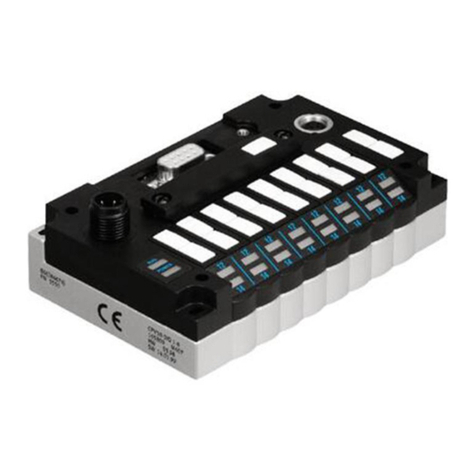
Festo
Festo CPV..-DI01 series User instructions
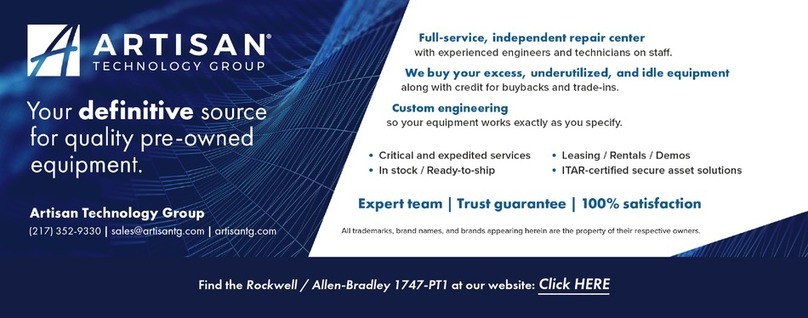
Rockwell international
Rockwell international Allen-Bradley 1747-PTA1E Getting started guide
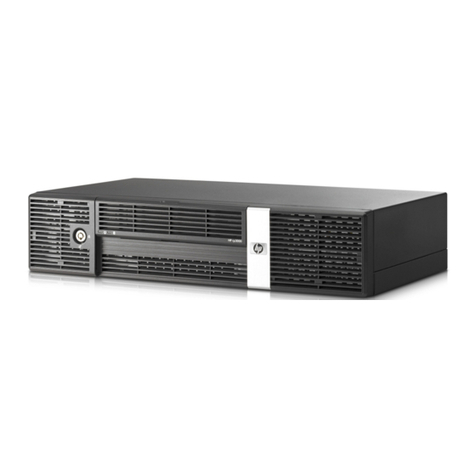
HP
HP Rp3000 - Point of Sale System Getting started guide
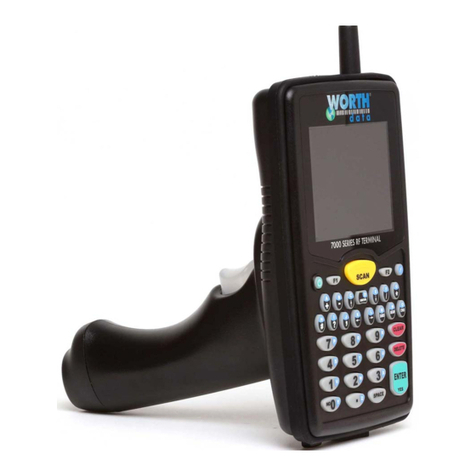
Worth Data
Worth Data 7100 Series Quick start and installation guide

Digital Equipment
Digital Equipment VT50 Service guide
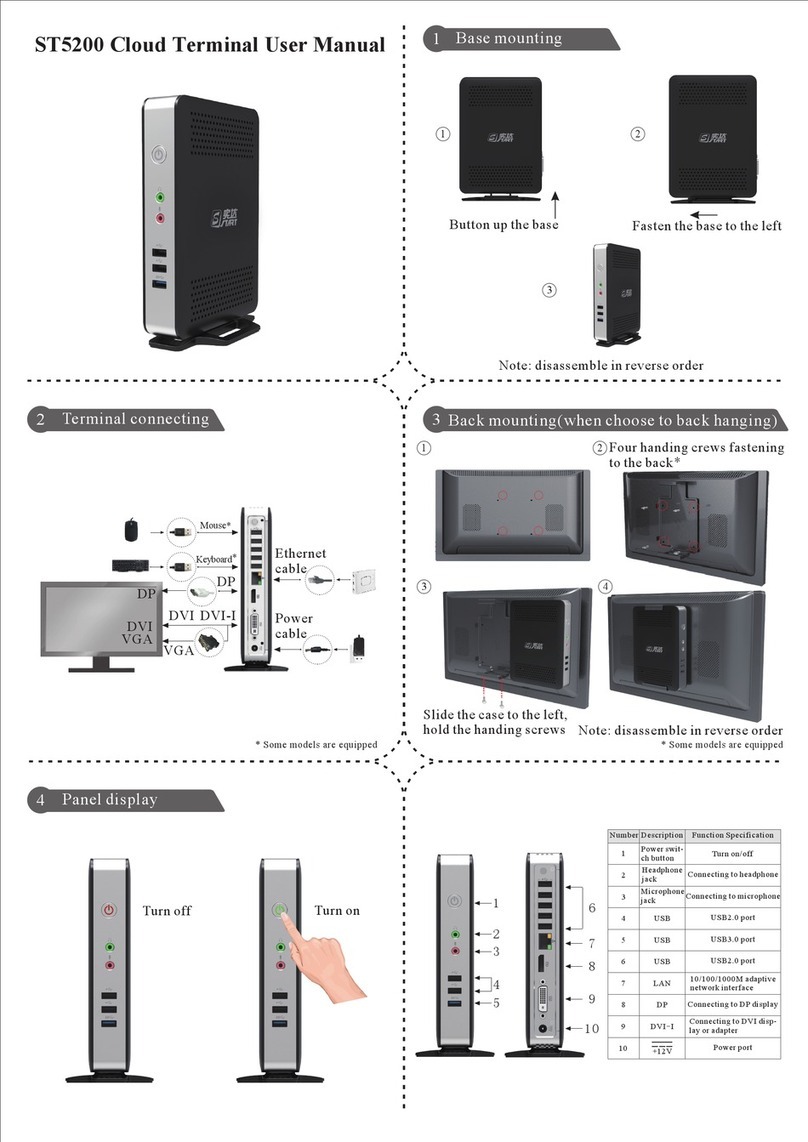
Start
Start ST5200 user manual

